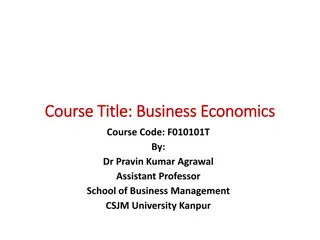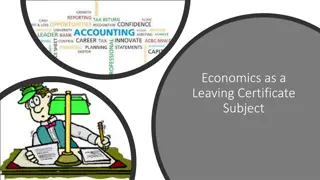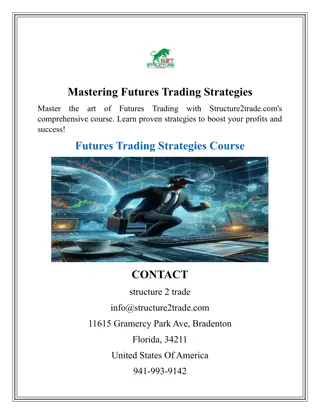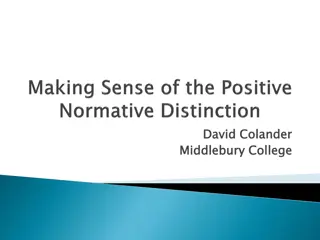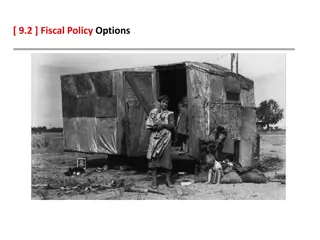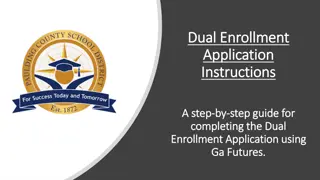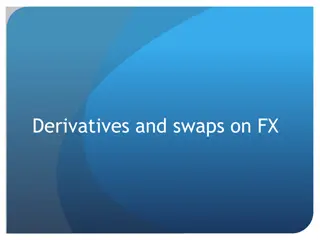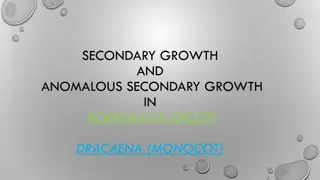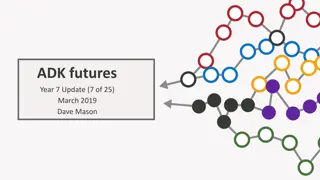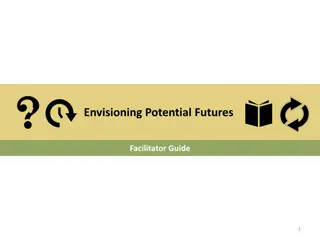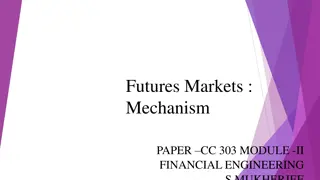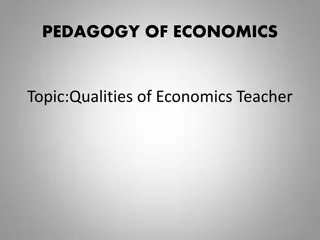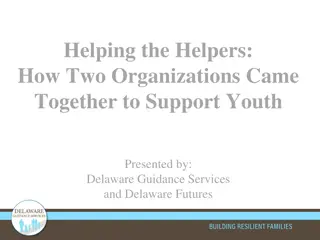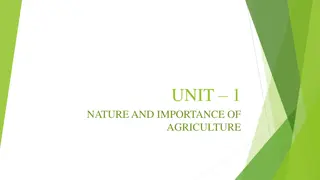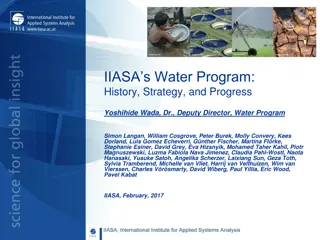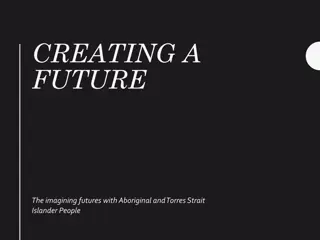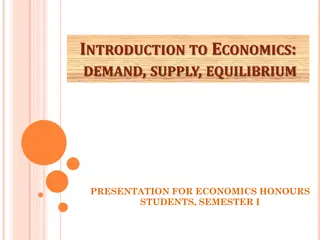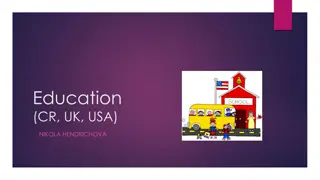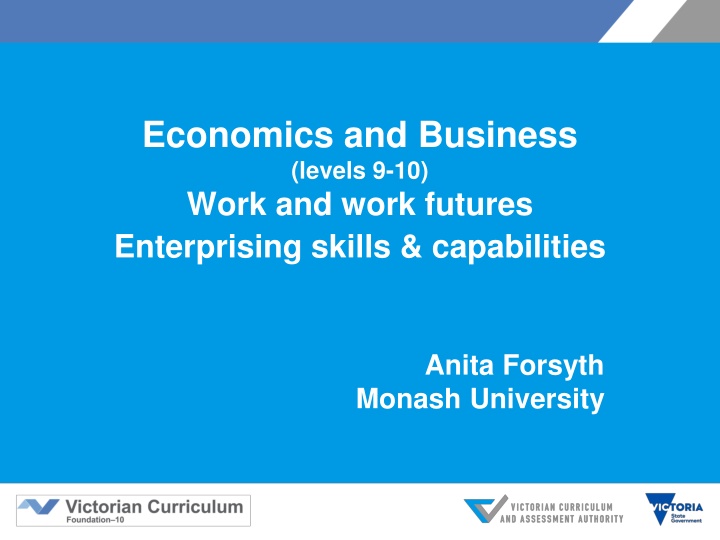
Navigating Changing Work Landscape for Future Success
Explore how the level 9-10 Economics and Business curriculum equips students with essential skills for the evolving world of work. Learn about the importance of enterprising capabilities, entrepreneurial mindset, and transferable skills in preparing students for a dynamic career landscape. Gain insights into the skills and attributes needed to thrive in the 21st-century workforce.
Download Presentation

Please find below an Image/Link to download the presentation.
The content on the website is provided AS IS for your information and personal use only. It may not be sold, licensed, or shared on other websites without obtaining consent from the author. If you encounter any issues during the download, it is possible that the publisher has removed the file from their server.
You are allowed to download the files provided on this website for personal or commercial use, subject to the condition that they are used lawfully. All files are the property of their respective owners.
The content on the website is provided AS IS for your information and personal use only. It may not be sold, licensed, or shared on other websites without obtaining consent from the author.
E N D
Presentation Transcript
Economics and Business (levels 9-10) Work and work futures Enterprising skills & capabilities Anita Forsyth Monash University
Introduction We are currently undergoing big economic shifts and the most significant disruption in the world of work since the industrial revolution.
Introduction (contd) This session will explore how aspects of the level 9-10 E&B Victorian curriculum can inform students about how work is changing and the skills employers are looking for in the 21stcentury in order to ensure students are prepared as productive participants in the new world of work and are able to drive economic and social progress in the years to come.
Introduction (contd) A young person today is going to need more than a qualification. The facts a young person is likely to have 17 jobs over 5 industries across their lifetime it is now taking a young person aged 15 to 24 4.7 years on average to find a full time job jobs of the future demand enterprise skills 70% more than jobs of the past
Introduction (contd) young people are going to need to be entrepreneurial & innovative to manage the diverse stages of their working lives they are going to need to be job builders and creators in their future rather than being job seekers they are going to need a toolkit of transferable, enterprise (21stcentury) skills and they need to start developing these early!
Introduction (contd) An enterprising mindset includes skills such as the ability to think critically and assess information be creative and confident work in teams solve problems be financially and digitally literate a good communicator build effective relationships self regulate, etc
Introduction (contd) enterprising young people are typically optimistic about their future and have raised aspirations for further education, training, employment and self employment
E&B at levels 9-10 Provides opportunities to plan curriculum, pedagogical and assessment approaches to meet these challenges. For example, from the Achievement Standard - By the end of Level 10, Students discuss ways that this may be achieved and the enterprising behaviours and capabilities that could be developed by individuals to assist the work and business environments. Students analyse the reasons why and how the work environment is changing and discuss the implications this has for individuals, businesses and the economy. Students identify economics and business trends, explain relationships and make predictions.
Approaching E&B at levels 9-10 A school case study example Offers Humanities in 4 compulsory semester units across Years 9-10 Year 9 Semester 1 Geography focus Semester 2 History focus Year 10 Semester 1 Economics and Business focus Semester 2 Civics and Citizenship focus
Approaching E & B at levels 9-10 A school case study example (cont d) In addition to the semester of E&B, Year 10 students are required to work in teams to undertake a purposeful, authentic task that develops their enterprising, 21stcentury skills and to present their work at an exhibition/conference at the end of semester 1 or 2 (dependent in which semester they are completing the task). Examples of these projects will be outlined later.
Approaching E&B at levels 9-10 Year 10 Semester 1 - Economics & Business Unit Timeline: 16 weeks approx. The unit is made up of 4 topics: Topic 1. Work & work futures 20-24 lessons (5-6 weeks) Topic 2. Economic performance & indicators - 12 lessons (4 weeks) Topic 3. Australia s Trading Relationships - Doing Business in Asia - 12 lessons (3 weeks) Topic 4. Managing the Finances - 12 lessons (3 weeks)
Work and work futures The focus of this topic is on the content descriptors including Work & Work Futures Research the way the work environment is changing in contemporary Australia and analyse the implications for current and future work Examine the roles and responsibilities of participants in the changing Australian or global workplace Enterprising Behaviours & Capabilities Identify the ways enterprising behaviours and capabilities can be developed to improve the work and business environments
Topic 1 Work and Work Futures - overview Technological change & digital disruption Changing work environments - hierarchical, flatter, flexible Reshaping work for the future: Technology, globalisation, demographic change, work & society Impact of emerging technologies on the future - Robots, Artificial Intelligence (AI), Internet of Things (IoT), the cloud, Big data, augmented reality, etc Where the jobs are/ are not The New Basics - enterprise skills and the skills young people need for the new work order , the importance of innovation, entrepreneurship and the rise of self-employment.
Technological change and digital disruption What is digital disruption? Digital disruption is a transformation that is caused by emerging digital technologies and business models. These innovative new technologies and models can impact the value of existing products and services offered in the industry. This is why the term disruption is used, as the emergence of these new digital products/services/businesses disrupts the current market and causes the need for re-evaluation.
Technological change and digital disruption Students research case study examples, explaining how these cases have disrupted current markets and caused the need for re- evaluation in terms of business pressures, work and work futures. (CEDA Report Australia s future workforce 2015 P79-84)
Digital disruptors and the disrupted
Technological change and digital disruption Disruptive innovations are creating new industries and business models, and destroying old ones. New technologies, data analytics and social networks are having a huge impact on how people communicate, collaborate and work. As generations collide, workforces become more diverse and people work longer; traditional career models may soon be a thing of the past. Many of the roles and job titles of tomorrow will be ones we ve not even thought of yet. (PWC 2016 The future of work a journey to 2022)
Changing work environments Hierarchical, flatter, flexible Describe the changing work environments and predict how this might impact work skills now and for the future. see Civics & Citizenship Alive 7 Australian Curriculum Edition eBookPLUS (2017) pps. 94-96 and clips https://www.youtube.com/watch?v=Chb3Mk7wVVQ https://www.youtube.com/watch?v=eU55cdqHv44https://www.you tube.com/watch?v=HEIHL6Zxtx0
Reshaping work for the future Five forces have been identified as having a significant effect on work and work futures - 1.Technology; 2. Globalisation; 3. Demography and longevity; 4. Society; and 5. Energy scarcity. Divide the class into five groups and allocate one factor to each group. The group reports back to the class on how their factor is likely changing/impacting work and work environments. See CEDA Report Australia s future workforce? (2015) pps 32-37 FYA The New Work Order (2015)
Impact of emerging technologies on the future Robots, AI, IoT, the cloud, Big data, etc What are the effects/impacts of these technologies on consumers? businesses? the economy? the workforce? Predict the sorts of jobs that are likely to be created? To disappear? (check your predictions with the research in the references below) See CEDA Report Australia s future workforce? June 2015 , P38-46 FYA (2016) The New Work Mindset Report https://www.youtube.com/watch?v=Tp7QkdSP Inside Udemy offices/education MOOCs
Where the jobs are/are not Refer to these resources and draw up a table that outlines jobs for the future compared to jobs that are disappearing. CEDA Report Australia s future workforce? June 2015 P192-202 https://www.youtube.com/watch?v=9TgCMXhOo5Y Phil Ruthven talk
Where the jobs are/are not (contd) Refer to the FYA The New Work Mindset report (2016) p. 15 and 21. The report describes 7 main job clusters in the Australian economy based on skills demanded by employers. Discuss which 3 job clusters appear to have the most potential for employment for the future. Explain why these job clusters have strong prospects. Discuss which two job clusters have weak future prospects. Outline why this is likely.
The New Basics Enterprise skills and the skills young people need for the new work order , the importance of innovation, entrepreneurship and the rise of self-employment. FYA The New Basics Report (2016) Jobs of the future demand enterprise skills 70% more than jobs of the past . P13 What are enterprise skills? These include creativity, critical thinking, problem solving, teamwork, digital literacy, financial literacy, communications, self regulation. Work futures also indicates increasing opportunities around self employment and entrepreneurship. Why? See CEDA Report Australia s future workforce? (2015) P179-191
The New Basics (contd) Important to consider that students can learn about enterprise but being involved in enterprising activities where they authentically apply and practise these skills is essential. Ensure teaching and learning opportunities for students are built in across the topic study to practise enterprising skills ie working in teams; undertaking research and communicating through written reports and presentations; problem solving activities; activities involving critical and creative thinking; using digital technologies to create, design, report, research, present, etc Design formative and summative assessment tasks associated with the unit that specifically target the development of enterprising skills. Where possible include an authentic assessment task where students work is shared beyond the classroom such as present findings at a school assembly; to the careers staff; in an online, published report; etc
Enterprise project Students work in teams of 4 to undertake an enterprise project. Students build their own start up where they are required to design and execute a project that contributes to the good of the school, local or global community. Half the cohort undertakes this project in semester 1 of Year 10, the other half in semester 2 of Year 10. Students are allocated two hours a week across a semester to undertake their project. Examples of specific projects have included: -setting up and running a coffee cart for a major school event; -designing an app to offer students across the school community advice about study skills;
Enterprise project (Contd) organising a peer mediation program to support students in school; organising and delivering community education programs related to a local social or environmental issue including an education program for parents following the introduction of the Compass system at school; researching community issues (youth homelessness; setting up a skate park; work futures; bicycle safety; etc ) and presenting findings to the relevant local government agency; undertaking an occupational and health safety audit for the school; researching education issues such as local education options and proposed responses; truanting students were employed to carry out research on truancy and proposed responses to the school s wellbeing team.
Enterprise project (Contd) students to undertake a review and evaluation of aspects of the school s curriculum, learning approaches, or other areas of education. For example in response to a Student Attitudes to School survey where the girls at the school rated Stimulating Learning much lower than the boys, a group researched how this attitude might be improved and made recommendations to the schools Curriculum committee about what might be changed.
Resources Civics & Citizenship Alive 7 Australian Curriculum Edition eBookPLUS (2017) Accenture research: https://www.accenture.com/au-en/insight-digital- disruption-future-of-work CSIRO Research http://www.csiro.au/en/Research/D61/Areas/Data-for-decisions/Strategic- Foresight/Tomorrows-Digitally-Enabled-Workforce CEDA Paper: Australia s Future Workforce. June 2015. http://www.ceda.com.au/research-and-policy/policy-priorities/workforce Foundation for Young Australians in particular the reports The New Work Mindset (2016) http://www.fya.org.au/report/the-new-work- mindset-report/ The New Basics (2016) http://www.fya.org.au/report/the-new-basics/ The New Work Order (2015) http://www.fya.org.au/report/new-work-order/
Resources PWC (2016) The future of work a journey to 2022 report https://www.pwc.com/gx/en/managing-tomorrows-people/future-of- work/assets/pdf/future-of-rork-report-v16-web.pdf Tripod Enterprise Education http://www.tripod.edu.au/ ABW Enterprise Education http://www.abw.org.au
CONTACT US Megan Jeffery Curriculum Manager, Business and Economics (03) 9032 1696 0428 374 149 jeffery.megan.j@edumail.vic.gov.au

